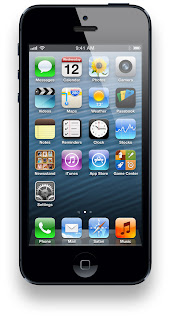So Apple has announced the new iPhone, the taller, ubersleek iPhone 5 with a faster processor.
Plenty of those who got a chance to use the iPhone 5 seem to have been touched by a bit of the famed Apple magic. So nothing has changed really. Or has it?
The touch screen, the retina display, Siri, a form factor that kept getting better, the iTunes store, the app store with more and better apps than any other platform.
But tech gurus around the world are saying something else now: that Apple's innovative disruptor status, guaranteed after every iPhone launch, is being challenged.
Here are the six disappointing features of iPhone 5:
Plenty of those who got a chance to use the iPhone 5 seem to have been touched by a bit of the famed Apple magic. So nothing has changed really. Or has it?
The touch screen, the retina display, Siri, a form factor that kept getting better, the iTunes store, the app store with more and better apps than any other platform.
But tech gurus around the world are saying something else now: that Apple's innovative disruptor status, guaranteed after every iPhone launch, is being challenged.
Here are the six disappointing features of iPhone 5:
- No NFC: NFC or Near Field Communication is a simple thing to implement - uses include initiation of easy pairing with Bluetooth devices and quick exchange of data between two devices. Apple's exclusion of NFC is surprising, especially considering that Passbook, a feature of the new operating system, is primarily for tickets, loyalty cards and shopping.
- No Battery Improvements: We'll know this for sure when the device gets torn down and analysed, but as for now, it seems like Apple has gone for a small(ish) battery in the iPhone 5, focusing instead on keeping the weight and thickness low. So while the A6 processor may indeed be more efficient - as is always the case with newer generation processors - the battery life equates to about the same as the iPhone 4S, which is to say, not so great.
- New Connector: The 30-pin connected was introduced when Apple launched the third generation iPod, roughly 7 years ago. Apple chose to stick with the bulky connector despite the industry moving towards the universal micro or mini USB. Lightning is supposedly faster and double-sided, but possibly the real reason it was introduced is that it is much smaller - needed because the devices are getting thinner.
The problem is, it instantly renders all old cables, bed stands, speaker docks and similar accessories obsolete. Apple will be selling a separate Lighting to 30-pin adapter which may work with some of the accessories.
It should be noted that when other manufacturers needed to provide additional functionality from a single port (like video out), they introduced a standard MHL (Mobile High-Definition Link) which is found on several non-Apple smartphones.. MHL can simultaneously charge the device and output 1080p video - yet, it is still backwards compatible with micro USB for charging and data transfer. Apple could have made the Lightning port compatible with micro USB, but they deliberately chose not to - instead selling a $25 Lightning to micro USB adapter for countries in the EU, when the micro USB port is mandated by law.
- No Wireless Charging: Several new phones like the Galaxy S III and Lumia 920 have introduced wireless charging but this was conspicuously absent in the iPhone 5, even though several rumours had reported this as a major new feature. Not to say that wireless charging cannot be enabled with the iPhone 5, but it will have to be with a thick case.
- App Compatibility: The iPhone 5 has a larger screen with a 16:9 aspect ratio, but it also has an increased resolution. While the older 4 and 4S have a screen resolution of 960 x 640 pixels, the 5 has 1136 x 640 pixels. This means that all existing apps will run with two black bars on either side.
At this very moment, scores of iOS developers are probably rushing to update their apps to support the new resolution, but you'll probably still find a few apps that aren't updated. Plus, there's no mention how apps developed for iPhone 5 will work on older devices, or how much the app size will increase.
- No major camera improvements: The 8 Megapixel iSight camera is essentially the same unit as the iPhone 4S - and they both have similar features: backside illuminated sensor, full HD video, f2.4 aperture, IR filter, face detection and so on. The only additions are faster speed of image capture, a dynamic low-light mode and 1.2MP front camera (up from VGA quality in the 4S).





0 Comments